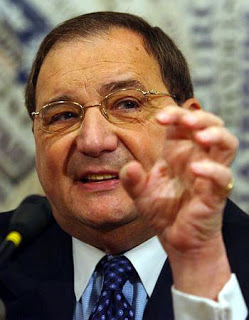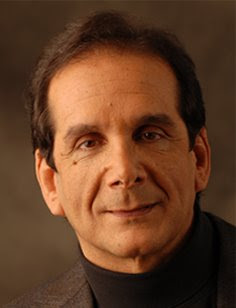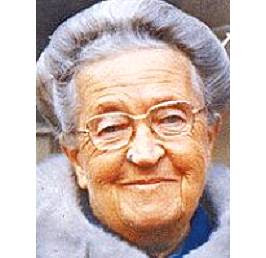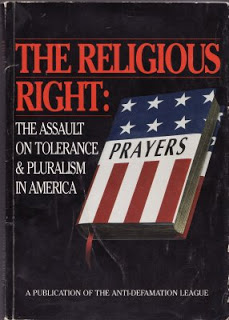Thursday, April 9, 2009
The Pogrom That Wasn’t
So, for only the second time in the history of this blog — that’s 404 essays so far — I’m going to republish a piece previously run elsewhere. By tomorrow evening — I promise! — this space will
be filled with a new, first-run essay. I’m also working on some YouTube projects; hopefully, we’ll see the first of those in a couple of weeks.
On the subject of video — I’m also including below a two-part video produced by a very industrious fellow named Rick, whose YouTube channel you folks really should check out. That video is an illustrated version of a commentary I did on the subject below for the old Review of the News Online program.
Five years ago the air was thick with dire warnings that the film “The Passion of the Christ” would ignite America’s ambient anti-Semitism into a firestorm of persecution. The lead voice in that ensemble was, predictably, the criminally misnamed Anti-Defamation League, which performed its familiar cadenzas of outrage and alarm.
Oddly enough, however, the anticipated persecution never materialized. There were even a couple of well-publicized episodes in which skinhead-type Nazi-wannabes, after seeing the film, repudiated their lifestyles, which would mean that The Passion’s impact translated into a net loss for the cause of Jew-hating.
Predictably, the ADL and its allies, after defaming more or less the entire American Christian population, never acknowledged that they were wrong.
In all candor, I’ve not seen The Passion. I don’t agree with much of Mr. Gibson’s theology, although I respect his formidable gifts as a filmmaker. From my perspective the key issue here wasn’t the film itself, but rather the fashion in which cynical opportunists like Foxman exploited it as an opportunity to engender inter-communal distrust and hostility, and the role played by people of his ilk in promoting “The Fatal Embrace” — a dependency on the “protective” power of the state, which is the true enemy of liberty, peace, prosperity, and tolerance. — WNG]

The unmistakable thrust of Foxman’s address was that because Christianity is innately anti-Semitic, Mel Gibson’s film could activate the latent anti-Semitism the ADL insists can be found everywhere–including the United States.
“For hundreds of years those four words–acted out, spoken out, sermonized out–inspired and legitimized pogroms, inquisitions and expulsions,” continued Foxman. “Many during the Holocaust who killed Jews from Monday to Friday went to church on Sunday and there was no disconnect for them, because, after all, all they were doing was killing ‘Christ killers.’ So for us, the possible impact of a Passion Play on the global scene with a global producer, with an icon, is not a fantasy, it’s a serious anxiety. For us, it is a flashback into history.”
Foxman elsewhere asserted that “Holocaust survivors … can vividly recall their families having to hide in the basement in order to avoid the wrath of Christians emerging from Easter Sunday services.”
Here Foxman ignores the well-documented fact that thousands of European Jews survived the Holocaust because Christians hid them in their basements or otherwise protected them from the Nazis. Among those thus sheltered was Foxman himself–who now besmirches pious Christians, rather than collectivist pagans, for the slaughter of millions of innocent Jews.
Foxman’s complaint was echoed by countless voices in the punditocracy.
“Since medieval times, passion plays–which, like Gibson’s movie, depict the last 12 hours of Christ’s life–have often been openly anti-Semitic and used to justify persecution of Jews,” opined the Baltimore Sun. “The Passion is hopelessly mired in anti-Semitic stereotypes,” declared Entertainment Weekly. “The mere choice of title is dangerously loaded: Passion plays, a centuries-old art form, are often so liable to incite anti-Semitic anger that Catholic theologians crafted guidelines in the ’80s for tonal appropriateness.”

In similar fashion, the New York Daily News ranted: “Mel Gibson’s The Passion of the Christ is the most virulently anti-Semitic movie made since the German propaganda films of World War II.” Newsweek expanded the indictment from passion plays and Gibson’s film to include the New Testament itself. Posing the question of whether “the Gospels themselves [are] anti-Semitic,” the February 16 cover story replies: “Not in the sense the term has come to mean in the early 21st century….”
The magazine goes so far as to imply that the New Testament should carry the spiritual equivalent of the Surgeon General’s warning affixed to cigarette packages: “The tragic history of the persecution of the Jewish people … clearly shows what can go wrong when the Gospels are not read with care.”
Boston Globe columnist James Carroll dispenses with such subtlety altogether, suggesting that the New Testament itself is a crime against tolerance: “Even a faithful repetition of the Gospel stories of the death of Jesus can do damage exactly because those sacred texts themselves carry the virus of Jew hatred.” New York Times film critic Frank Rich, who execrates Gibson’s film as a “porn movie” of the “homoerotic” variety (a description which Rich would generally offer as a compliment, judging from previous reviews), insists that “the fracas over The Passion has made me feel less secure as a Jew in America than ever before.”
Strange as it may seem, Rich has it exactly right. It is not the film itself, or the Christian faith that the film reflects, but rather the orchestrated outrage over that film that may undermine relations between Christians and Jews and ultimately imperil the rights and personal security of all Americans.
For roughly a year prior to the release of Gibson’s film, the Anti-Defamation League waged a campaign traducing both the director and his movie as anti-Semitic. In the course of that campaign, an ADL operative purloined an early draft of the script.
On the basis of a few isolated elements of the stolen script, the ADL condemned the work in progress for displaying “numerous anti-Semitic elements” and demanded that Gibson rework his film to its satisfaction. Failing in its effort to exercise editorial control over the film’s content, the ADL urged the director to add a postscript to the film that would constitute, in essence, the metaphorical “Surgeon General’s warning” about the supposedly toxic effects of Christianity.[…]

Rather than leaving audiences to ponder the essential Christian message of redemption, the ADL’s suggested coda would leave audiences pondering the supposed collective guilt of Christians for the historic persecution of Jews, up to and including the hideous crimes committed by the anti-Christian pagan Adolf Hitler and his National Socialist regime.
Gibson, to his credit, essentially ignored the ADL, which–in collaboration with the major media and other self-appointed “watchdog” groups–escalated its defamation campaign.
Numerous Jewish religious leaders and scholars who previewed the film–including Rabbi Daniel Lapin and film critic Michael Medved–hailed it as an artistic masterpiece devoid of any anti-Semitic content.
Referring primarily to the ADL, Rabbi Lapin offered the following commentary shortly after Gibson’s film was released: “Those Jewish organizations that have squandered both time and money futilely protesting The Passion, ostensibly in order to prevent pogroms in Pittsburgh, can hardly be proud of their performance. They failed at everything they attempted. They were hoping to ruin Gibson rather than enrich him. They were hoping to suppress The Passion rather than promote it. Finally, they were hoping to help Jews rather than harm them. In this, they have failed miserably. By selectively unleashing their fury only on wholesome entertainment that depicts Christianity in a positive light, these critics have triggered anger, hurt, and resentment.”
Rabbi Lapin, like countless other devout Jews, is a man of faith and goodwill. Thus it’s not surprising that he is insufficiently cynical to understand how staining Christianity with the tar brush of anti-Semitism benefits the ADL and its agenda. In fact, sowing, “anger, hurt, and resentment” through the use of dishonest–and occasionally illegal–tactics is the ADL’s stock in trade, and it has been for decades.
During the late 1970s and early 1980s, an individual named James Mitchell Rosenberg, described by political analyst Laird Wilcox as “a career infiltrator for the Anti-Defamation League,” was a fixture at Ku Klux Klan rallies in the Midwest.
For the benefit of television reporters, Rosenberg also posed as a leader of a paramilitary group called the “Christian Patriot’s Defense League,” which was the subject of a breathless expose entitled “Armies of the Right.” He was eventually arraigned on criminal charges, which were dismissed after the intervention of Irwin Suall, his ADL supervisor.
A little more than a decade later, Roy Bullock, described by Wilcox as “a paid ADL operative and well-known figure in the San Francisco homosexual community,” engaged in similar undercover work in the Bay Area, attempting to forge spurious links between ADL-designated “hate groups” and actual terrorist organizations. Bullock worked closely with Tom Gerard, an intelligence officer with the San Francisco Police Department.
According to Wilcox, Gerard “regularly took information from police files for transmittal to the ADL and in some cases to Israeli intelligence agencies, with whom the ADL works closely.” Gerard avoided criminal charges by fleeing the country.
The ADL bribed its way out of trouble by offering a $75,000 donation to a San Francisco hate crimes investigation fund.
[Fifteen] years ago, the ADL released a 193-page screed entitled The Religious Right: The Assault on Tolerance and Pluralism in America, purporting to document that Christian conservatives pose a menace to Jews and other minorities.
Outraged by this libel, 75 prominent American Jews signed a full-page ad in the New York Times to condemn the ADL. Since Jews have often been victimized by religious bigotry, the ad pointed out, “we have a special obligation to guard against it, and all the more so, when in the case of the ADL attack on our Christian fellow citizens, it emanates from our own community.”
Additionally, continued the ad, “Judaism teaches … that we have the duty to acknowledge the good done to us. In issuing The Religious Right study, the ADL has among other things seriously violated that principle.”
On March 1, just shortly after The Passion’s debut, the U.S. Supreme Court let stand a $10.5 million defamation judgment against the ADL arising out of a Colorado lawsuit.
William and Dorothy Quigley had filed the suit in the mid-1990s after ADL regional director Saul Rosenthal, speaking in a press conference, accused the couple of being anti-Semites.
In 1994, the ADL intervened in a pointless quarrel between the Quigleys and their Jewish neighbors, the Aronsons. Seeking to prove that the Quigleys were motivated by anti-Semitic prejudice, the ADL suggested that the Aronsons conduct an illegal wiretap of the Quigleys’ phone conversations.
Another Christian who just didn’t “get it,” from the ADL’s perspective: Father Bruno (born Henri Reynders) a Belgian Benedictine Monk, led a large and sophisticated rescue operation — at considerable personal peril — after being released from a POW camp in 1941. With him in the photo above are five of the hundreds of Jewish children Father Bruno and his associates protected from the Nazis.
The league then went public with its accusations against the Quigleys, who found themselves formally accused of hate crimes (a charge subsequently dropped). As a result of the ADL’s actions, the Quigleys were battered with death threats and hate mail (including a package containing dog feces), and were denounced from the pulpit by their priest. The family was driven to hire bodyguards, and William Quigley–who worked in the motion-picture industry–found that his career was effectively destroyed. (This underscores the commercial and career risks encountered by Mel Gibson and his colleagues after they were targeted by the ADL.)
“We’re all disappointed,” commented ADL Mountain States Region director Bruce DeBoskey to the March 2 Rocky Mountain News. Pointing out that more than a dozen other “human rights” organizations had filed legal briefs in support of the ADL, DeBoskey insisted–apparently with a straight face–that “we do remain committed to our fight against hatred and racism and bigotry and extremism and anti-Semitism.”
As the Quigley case illustrates, in contemporary America it’s much more dangerous to be labeled an anti-Semite than to be identified as a Jew. This certainly doesn’t sound like the sort of thing that would happen in a culture primed for mass pogroms against Jews.
Nevertheless, notes historian Paul Gottfried (a Conservative Jew), the ADL and similar organizations “appeal successfully to their donor base by evoking the specter of Christian traditionalists. This is happening not in Czarist Russia but in a country founded by Protestant sectarians, who have never persecuted Jews, and the campaign of fear and loathing is being directed against enthusiastically philo-Semitic Christians.”
In fact, America is unquestionably the most philo-Semitic society in the world. As Orthodox Jewish author David Klinghoffer points out: “You’ve heard the phrase ‘anti-Semitism without Jews,’ to describe the hostility to Jews felt in countries … that don’t have any Jews. In the American Jewish community, we’ve got anti-Semitism without anti-Semites.”
In a July 15, 1994 interview with the Jerusalem Post, historian Leonard Dinnerstein, author of the book Anti-Semitism in America, observed that “anti-Semitism in the U.S. has clearly declined to an unimagined degree…. [I]t’s become so minuscule as to be virtually irrelevant…. Jews are incredibly secure in the United States, and I see no reason whatsoever why that should change…. The fact is, a lot of American Jews just aren’t ready to accept just how well-accepted they are in America.”
Citing the ADL’s own annual audits of anti-Semitic acts, Dinnerstein concluded that “anti-Semitism is just a tiny blip on the American consciousness.” Yet to judge matters from the frenzied reaction The Passion provoked from many pundits, one would assume that America abounds in crypto-anti-Semites willing to stage pogroms on the smallest pretext. Such scapegoating of Christianity is not merely libelous; it is literally demented.
As Professor Benjamin Ginsberg of Johns Hopkins University pointed out in his 1993 study The Fatal Embrace, it is statism–not Christianity–that lies at the root of historic anti-Semitism. In previous eras, Ginsberg explains, Jews were socially marginalized people whose status led them “to seek the protection of the state…. Over the past several centuries … Jews have played a major role in the strengthening of existing states and in efforts to supplant established regimes with new ones.”
In many states, he continues, “Jews were crucial in building and staffing institutions of extraction, coercion, administration, and mobilization…. [T]hese relationships between Jews and the state have been the chief catalysts for organized anti-Semitism.”
Digested into simple terms, Ginsberg’s compelling thesis is that time and again, Jews have sought to build state power in order to protect themselves from persecution–only to engender the hostility of those whose prosperity and liberties suffer at the hands of the state. And time and again, the state turned its wrath on the same Jewish advisers and agents who had worked so diligently to expand its powers–often with lethal consequences for them and many innocent Jews.
Despite this utterly predictable outcome, Ginsberg observes, “Jews often continued to look to the state for protection even when it was the state itself that was the source of their problems.” He cites one particularly tragic example of this “fatal embrace” at work: “[T]o the very end many German Jews could not believe that the German state would fail to protect them from the excesses of Nazi fanatics.”
As Rabbi Lapin and many other Jewish leaders have pointed out, America’s Christian heritage is the single most important reason why Jews have enjoyed unparalleled acceptance and security in this country. A closely related reason is our constitutional system of limited government under law, which was designed to limit state power in a way that would prevent the dreadful consequences of the “fatal embrace” described by Ginsberg.
The ADL’s campaign to execrate Mel Gibson and his film by libeling the Gospels and Christianity as being anti-Semitic is a calculated effort to undermine the goodwill of American Christians and to incite inter-communal hostility. Both Jews and non-Jews are hurt by this smear tactic. The only obvious beneficiary (besides the ADL itself, which profits handsomely from such needless rancor) will be the state–which will leave not only Jews, but all of us, in much greater peril.
***
[The foregoing essay originally appeared in the April 5, 2004 issue of The New American; Copyright 2009 by William Norman Grigg]
On sale now.
Dum spiro, pugno!
Content retrieved from: http://freedominourtime.blogspot.com/2009/04/pogrom-that-wasnt.html.







